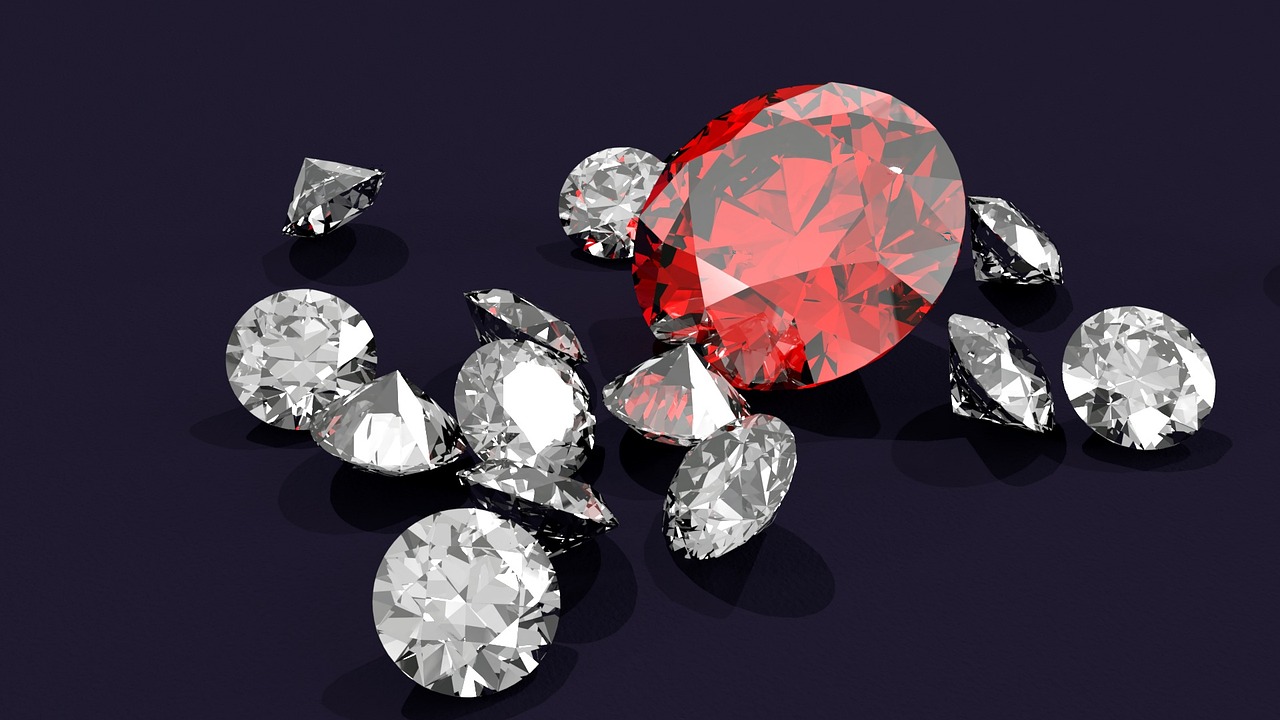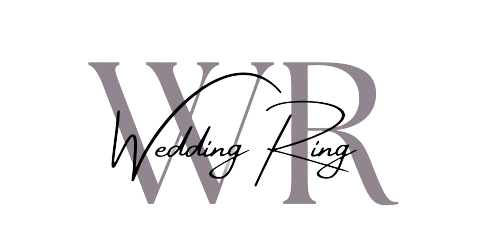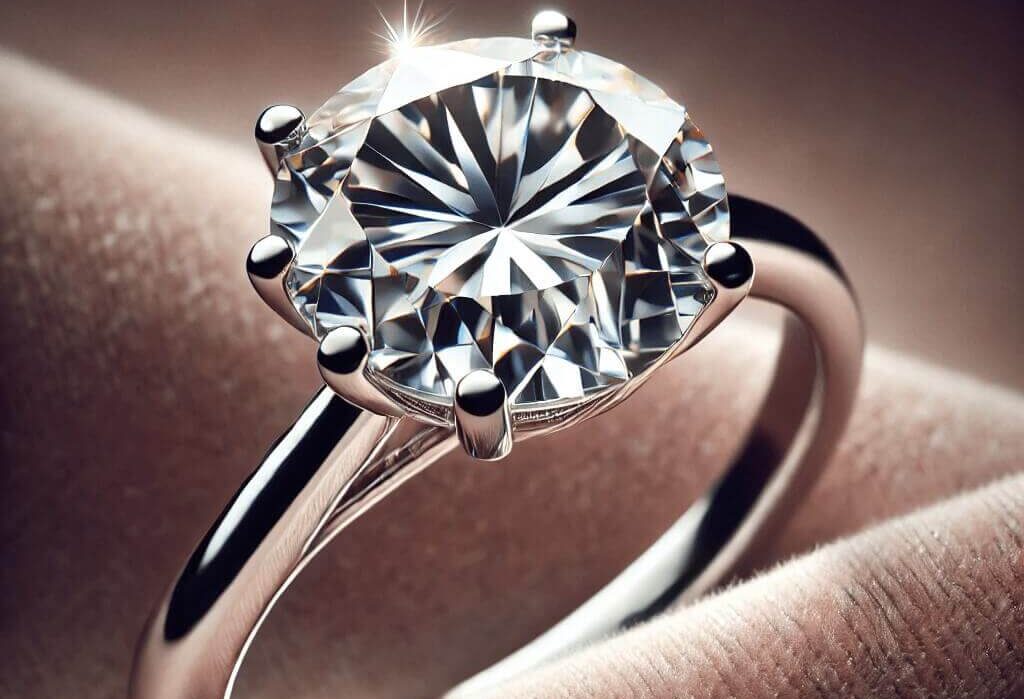How to Tell If a Diamond is Real: A Guide for Wedding Rings
When it comes to wedding rings, diamonds are the ultimate symbol of love and commitment. But how can you be sure that the diamond in your ring is genuine? With the growing market of synthetic and imitation stones, it’s crucial to know how to identify a real diamond. In this article, we’ll explore simple yet effective methods to test the authenticity of diamonds, ensuring your wedding rings sparkle with true brilliance.
Why the Authenticity of Diamonds in Wedding Rings Matters
A diamond is not just any gemstone; it’s a precious stone that represents the enduring nature of love. Knowing that your diamond is real adds sentimental and monetary value to your wedding rings. Whether you’re purchasing a ring for the first time or inheriting a family heirloom, learning how to distinguish a genuine diamond is essential.
How to Identify Real Diamonds in Wedding Rings
Identifying a real diamond requires a few simple tests that you can perform at home or with the help of a professional. Here are some effective methods to tell if your diamond is genuine:
1. The Water Test: A Quick and Easy Method
The water test is one of the simplest ways to test your diamond at home. Fill a glass with water and gently drop the diamond into it. A real diamond will sink to the bottom because it is denser than water, while a fake diamond will float or sink slowly.
Why It Works: Real diamonds have a high density, which helps differentiate them from synthetic or imitation stones like cubic zirconia.
2. The Fog Test: Using Your Breath to Detect Authenticity
Another simple way to test your diamond is by breathing on it. Hold the stone close to your mouth and fog it up with your breath. A real diamond will clear up almost instantly, while a fake diamond will remain fogged for a few seconds.
Why It Works: Diamonds are excellent conductors of heat, meaning they disperse heat quickly, unlike fake stones.
3. Checking for Imperfections: Look for Natural Flaws
Most real diamonds have small imperfections called inclusions, which are natural flaws formed during the diamond’s creation. Using a magnifying glass or jeweler’s loupe, examine your diamond closely. If you see tiny imperfections or small mineral deposits, it’s likely a real diamond. However, a perfectly flawless stone might be a synthetic diamond or cubic zirconia.
Why It Works: Real diamonds are rarely perfect, and the presence of inclusions can confirm their authenticity.
Professional Methods to Confirm the Authenticity of Diamonds
While at-home tests can be insightful, professional testing is the most reliable way to verify your diamond’s authenticity. Here are some expert methods:
4. The UV Light Test: Fluorescence Analysis
Diamonds often emit a blue fluorescence when exposed to UV light, although not all real diamonds will do this. A professional jeweler can use a UV lamp to check for this trait, which can help indicate whether the stone is genuine.
Why It Works: Fluorescence is a natural characteristic of many diamonds and helps in distinguishing them from fakes.
5. The Refractivity Test: Observing Light Behavior
One of the defining properties of diamonds is their ability to bend and refract light, giving them their unique sparkle. A professional refractivity test uses specialized tools to observe how light passes through the stone. Real diamonds refract light internally, creating that signature shine, whereas fake stones allow light to pass straight through.
Why It Works: The high refractivity of diamonds is unmatched by synthetic alternatives, making this test a reliable indicator.
6. Certification and Appraisal: The Ultimate Proof
For ultimate peace of mind, have your diamond professionally certified by a reputable gemological institute, such as the Gemological Institute of America (GIA). Certification provides detailed information about your diamond’s cut, color, clarity, and carat weight, and confirms its authenticity.
Why It Works: Certification from a trusted authority is the most reliable way to ensure your diamond is real.
Table: Quick Comparison of Diamond Authenticity Tests
| Test Method | Description | Reliability |
|---|---|---|
| Water Test | Diamond sinks in water | Medium |
| Fog Test | Clears up quickly when breathed upon | Medium |
| Magnifying Inspection | Check for natural flaws | High |
| UV Light Test | Check for fluorescence | High |
| Refractivity Test | Observes light behavior | High |
| Certification | Professional gemological assessment | Ultimate |
Common Misconceptions About Diamond Authenticity
It’s easy to fall for misconceptions when testing diamonds, especially with the rise of synthetic alternatives. Some people believe that if a stone scratches glass, it must be a diamond; however, many other stones can also scratch glass. Therefore, relying solely on one test is insufficient.
Conclusion: Protect Your Investment in Wedding Rings
Understanding how to tell if a diamond is real is crucial when purchasing or inheriting wedding rings. Whether you use at-home tests or seek professional certification, verifying the authenticity of your diamond will ensure that your wedding ring remains a genuine representation of your love. Remember, the sparkle of a real diamond is more than just beauty—it’s a promise of authenticity and enduring value.




